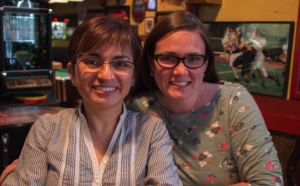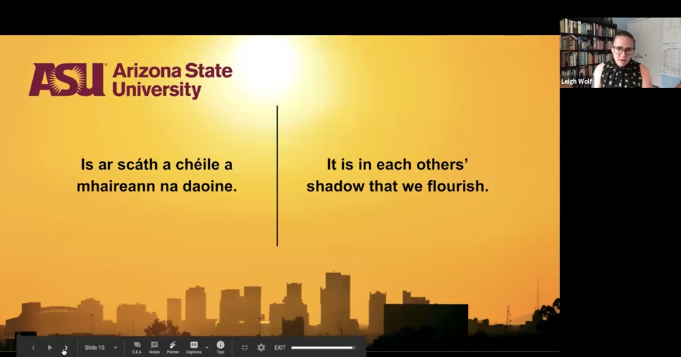This past fall I had the privilege of teaching an online doctoral seminar – on teaching online. I’ve been sitting on a reflective blog post for quite a while, and, just want to get something out in the digital ether before I look at the clock and it’s fall 2021!
Here is the syllabus and schedule from the course. We developed the course and topics as we went week by week – and it was terrifying. I’ve been accustomed to set content for the past three years in the online teaching I’ve been doing with the EdD program (and when I taught MAET online.) While there is room for spontaneity and flexibility with set content, it is a great comfort to know week to week, module to module where we are headed. (I honestly never thought I would find so much comfort in that mode.) Don’t get me wrong, it doesn’t allow me to rest on my laurels, but provides much needed stability and structure. Eliminating that structure, during a pandemic, caused me quite a bit of stress. With that said, I could not have asked for a better group of scholars to learn from and with. They all embraced and welcomed the unknown directions and ultimately each found ways to connect to the content and the course. (For example, Mikey Hall created a fantastic assignment and site for his English 101 course (which you can visit here.)
There are lots of other posts that I could (and probably should) write – but – for now, I got something up here to share! Hopefully the schedule (which contains all of the readings) will be helpful for others. If not open source, the links go to ASU Library resources, but, should not be hard to find via other library systems.
I also have to give a special shout out to our amazing ASU education librarian Linda DeFato – she was instrumental in helping us get full online access to the following books via the library that came out as the seminar was being delivered:
Bayne, S. (2020). The Manifesto for Teaching Online. The MIT Press.
Blum, S., & Kohn, A. (2020). Ungrading: Why rating students undermines learning (and what to do instead). West Virginia University Press.



 In the fall of 2019 I was asked to serve as a faculty advisor for Current Issues in Education (along side my incredible colleague Dr.
In the fall of 2019 I was asked to serve as a faculty advisor for Current Issues in Education (along side my incredible colleague Dr.